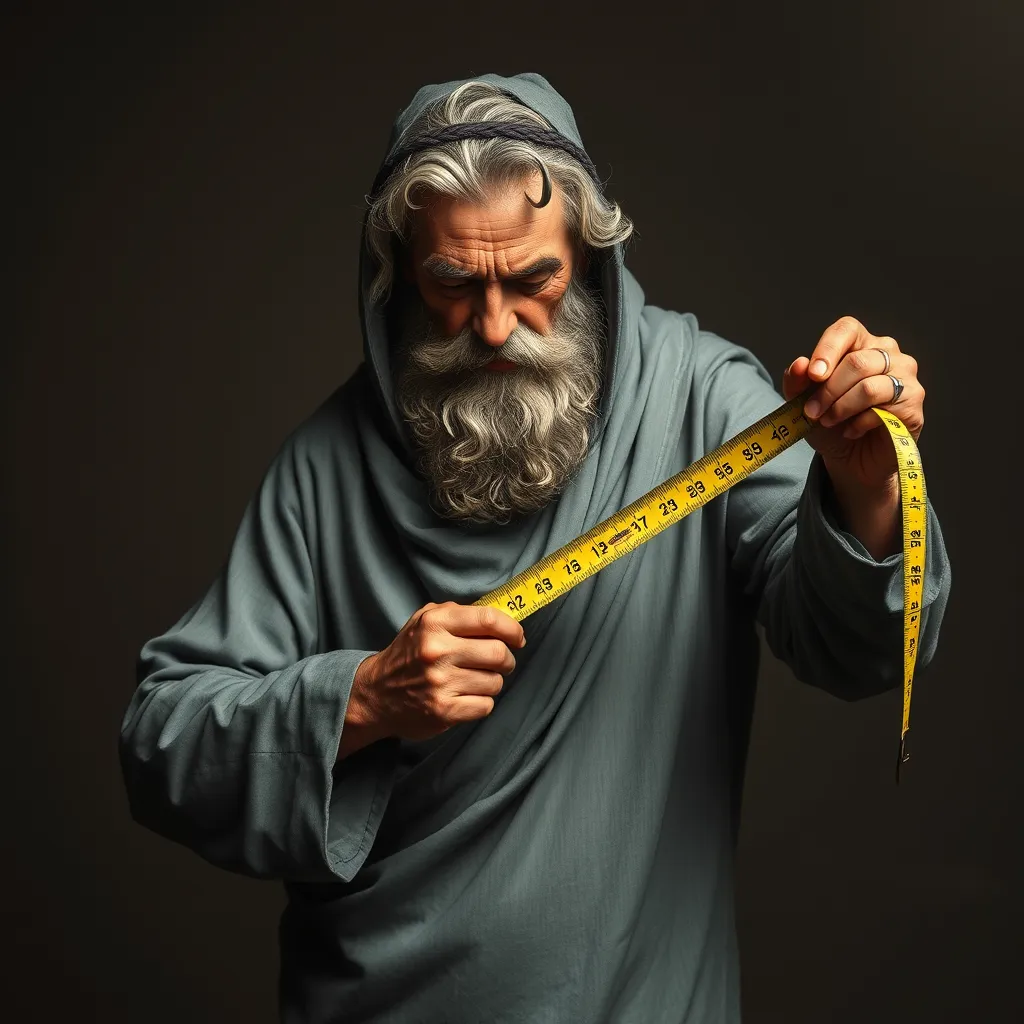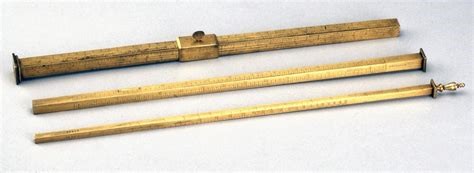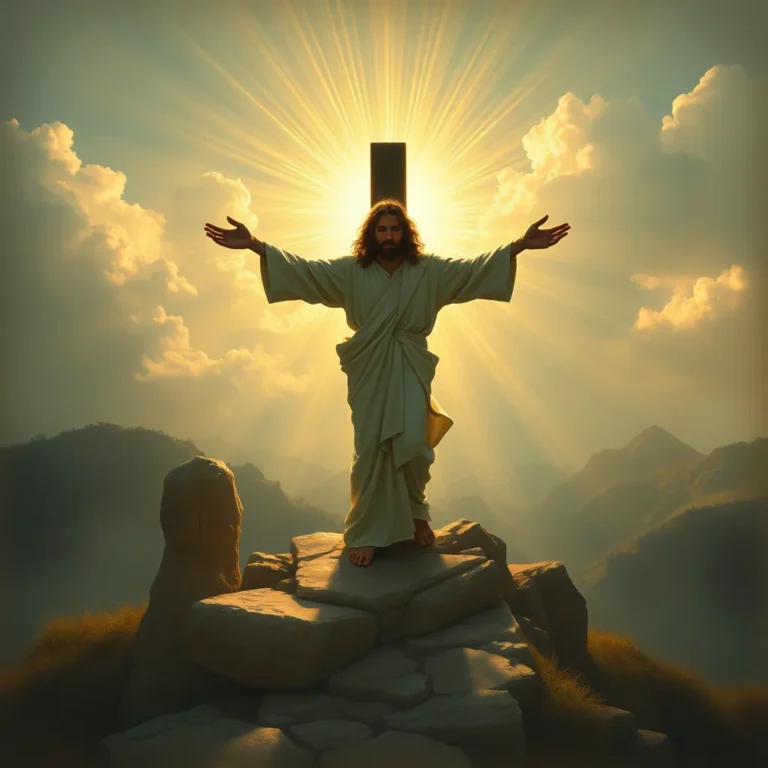
(*All Bible verses are from the NIV unless otherwise noted)
Chapter 11
1 I was given a reed like a measuring rod and was told, “Go and measure the temple of God and the altar, with its worshipers.
2 But exclude the outer court; do not measure it, because it has been given to the Gentiles. They will trample on the holy city for 42 months.
Chapter 11 is a pause or interlude in the vision’s narrative. It’s helpful to study the first fourteen verses in conjunction with chapters 12 and 13. The unbelieving Gentiles are to trample the Holy City for forty-two months, or, using the year-for-a-day interpretation that many scholars suggest, 1,260 days or 3 1/2 years.
Parallelism is again used here. The best way to understand the forty-two-month period and its circumstances is to imagine this segment of time as one object with three sides. Portions of the eleventh, twelfth, and thirteenth chapters describe the same events using different images.
Rev 11:1
I was given a reed like a measuring rod:

The Greek term kalamos (kal’-am-os), means reed, the plant or its stem, or a pen1. Originally, the measuring rod was an actual reed used for measurements of considerable distance but eventually came to be used to measure specific lengths. The length of the reed2 was typically six cubits3, or 10-15 feet.
Rev 11:1
Go and measure the temple of God and the altar, with its worshipers:
The prophets Ezekiel and Zechariah had a similar experience (Ezek 40-44, Zech 2). Ezekiel’s purpose was to compare the precise lines of the Temple4, its strong guardhouse and protective gates, to the people of Israel, who were wayward and crooked. Zechariah sees a “man with a measuring line” going to Jerusalem to “find out how wide and how long it is.”
Jerusalem had been destroyed by the Babylonians (c. 587 BC). Both visions promised that Jerusalem and the Temple would be restored, which was eventually accomplished.
More importantly, Jerusalem is used as a symbol for the people of God! Zechariah received this promise:
Zech 2:4 … “Run, tell that young man, ‘Jerusalem will be a city without walls because of the great number of people and animals in it. 5 And I myself will be a wall of fire around it,’ declares the LORD, ‘and I will be its glory within.’
Zech 2:10 “Shout and be glad, Daughter Zion. For I am coming, and I will live among you,” declares the LORD. 11 “Many nations will be joined with the LORD in that day and will become my people. I will live among you and you will know that the LORD Almighty has sent me to you.
It will be a city without walls;
The Lord will live among them;
Many nations (Gentiles) will be joined with the Lord and will become his people.

These verses paint a picture of the New Covenant Church that will one day encompass all the world’s nations. In Chapter 3, John is promised that God will live in the “New Jerusalem,” and in Chapter 21, New Jerusalem is identified as a “bride beautifully dressed for her husband”—God’s redeemed people, the bride of Christ.
Rev 3:12 The one who is victorious I will make a pillar in the temple of my God. Never again will they leave it. I will write on them the name of my God and the name of the city of my God, the new Jerusalem, which is coming down out of heaven from my God; and I will also write on them my new name.
Rev 21:2 I saw the Holy City, the new Jerusalem, coming down out of heaven from God, prepared as a bride beautifully dressed for her husband. 3 And I heard a loud voice from the throne saying, “Look! God’s dwelling place is now among the people, and he will dwell with them. They will be his people, and God himself will be with them and be their God.
John is told to measure not only the Temple but also those who worship there. We often hear phrases such as, “You just don’t measure up!”, or, “The measure of a person is their integrity.” If we continue with the premise that John’s vision is symbolic rather than literal, what would it mean to take the measure of a person or situation?
Psa 39:4 [ESV] “O LORD, make me know my end and what is the measure of my days; let me know how fleeting I am!
New Testament writers explain that the purpose of the earthly Tabernacle and Temple was to prepare God’s people for the last great sacrifice for sin, Jesus:
Heb 8:5 [The priests] serve at a sanctuary that is a copy and shadow of what is in heaven. This is why Moses was warned when he was about to build the Tabernacle: “See to it that you make everything according to the pattern shown you on the mountain.”
Heb 9:24 For Christ did not enter a sanctuary made with human hands that was only a copy of the true one he entered heaven itself, now to appear for us in God’s presence.
1Cor 3:16-17 Don’t you know that you yourselves are God’s temple and that God’s Spirit dwells in your midst? 17If anyone destroys God’s temple, God will destroy that person; for God’s temple is sacred, and you together are that temple.
1 Cor 6:19 Do you not know that your bodies are temples of the Holy Spirit, who is in you, whom you have received from God?
The temple Jesus established by the New Covenant are those redeemed by his shed blood. This is the “temple” John is to take measure of.
Rev 11:2
But exclude the outer court; do not measure it because it has been given to the Gentiles:
Herod’s temple was destroyed along with the rest of Jerusalem by the Romans in AD 70. It contained four courts, separated from one another, and each designed for a different purpose:

- The Court of the Gentiles (also called the Court of the People or the Great Court) was the outermost courtyard and the only area of the Temple where non-Jews were allowed5. This Outer Court was accessible to non-Jews, foreigners, and those considered impure. There, money changers exchanged foreign currency, and vendors sold animals for sacrifice. It was in this area that Jesus drove out the money changers (John 2:11–12; Matthew 21:17–23).
- The Court of the Women was the only area of the Temple in which women could congregate, worship, and contribute money to the “poor boxes” (Luke 21:1–4).
- The Court of Israel could only be entered by ceremonially clean Jewish men.
- The Inner Court, the Court of Priests, where the altar stood, was accessible only to Levitical priests6.
- The Holy of Holies, the innermost sanctuary, was closed off by a veil or curtain. In Solomon’s Temple, the Ark of the Covenant containing the stone tablets of commandments, a jar of manna, and Aaron’s budding staff had been kept. No one was allowed to enter except the High Priest, and even he would only enter once a year on Yom Kippur (Day of Atonement), to offer the blood of sacrifice and incense. It was here that Moses and successive generations of priests sought to enter the presence of God (Exod 30:36).
Through Jesus, a new covenant with God was established. His children no longer need to go into a temple to meet with Him or have a priest intervene for them. Peter declared that all faithful followers of Jesus are a royal priesthood (1 Pet 2:5-9), all of whom can enter the inner court of this new covenant temple. The sacrifice offered within this temple is not one of death but one of life:
Rom 12:1 Therefore, I urge you, brothers and sisters, in view of God’s mercy, to offer your bodies as a living sacrifice, holy and pleasing to God—this is your true and proper worship.
In a spiritual sense, the people who make up the “outer courts” that John is commanded not to measure, are those who reject God. The Hebrew term goy, and the Greek, Gentile7 are terms that broadly refer to non-Jewish people or nations:
Ezra 6:21 So the Israelites who had returned from the exile ate it, together with all who had separated themselves from the unclean practices of their Gentile neighbors in order to seek the LORD, the God of Israel.
Acts 10:28 He said to them: “You are well aware that it is against our law for a Jew to associate with or visit a Gentile. But God has shown me that I should not call anyone impure or unclean.
Rev 11:2
[The Gentiles] will trample the holy city:
To the Jews, the “Holy City” was Jerusalem:
Isa 52:1 Awake, awake, Zion, clothe yourself with strength! Put on your garments of splendor, Jerusalem, the holy city. The uncircumcised and defiled will not enter you again.
Neh 11:1 … The rest of the people cast lots to bring one out of every ten of them to live in Jerusalem, the holy city, while the remaining nine were to stay in their own towns.
God established a new holy city, foretold by the prophets and confirmed by the new covenant in Jesus. Those who believe and surrender to the Father are a holy city, prepared as a fragrant and pure offering before God – the Church, the bride of Christ:
Isa 60:14 The children of your oppressors will come bowing before you; all who despise you will bow down at your feet and will call you the City of the LORD, Zion of the Holy One of Israel.

Isa 62:12 They will be called the Holy People,the Redeemed of the LORD;and you will be called Sought After,the City No Longer Deserted.
Eph 5:25 Husbands, love your wives, just as Christ loved the church and gave himself up for her 26 to make her holy, cleansing her by the washing with water through the word, 27 and to present her to himself as a radiant church, without stain or wrinkle or any other blemish, but holy and blameless.
2 Cor 11:2 I am jealous for you with a godly jealousy. I promised you to one husband, to Christ, so that I might present you as a pure virgin to him.
Rev 19:7-9 7 Let us rejoice and be glad and give him glory!For the wedding of the Lamb has come,and his bride has made herself ready. 8 Fine linen, bright and clean,was given her to wear.”(Fine linen stands for the righteous acts of God’s holy people.) 9 Then the angel said to me, “Write this: Blessed are those who are invited to the wedding supper of the Lamb!” And he added, “These are the true words of God.”
Rev 21:2 I saw the Holy City, the new Jerusalem, coming down out of heaven from God, prepared as a bride beautifully dressed for her husband.
Rev 11:2
For forty-two months:
If the “Holy City” is the Church, consider the ways the Gentiles (non-believers)have trampled the holy city (believers).
The premise of this study is that John’s prophetic images are symbolic, not literal, except when the Savior addresses the Apostle with personal comments. So, while “forty-two months” seems like a straightforward description of time, most Christians believe that God is not constrained by the temporal measurement of time and space as we define them8.
The time period of forty-two months appears in various forms throughout the Revelation. The Hebrew word chodesh refers to a lunar month9. The number of days in a lunar month or year differs according to where you are on the globe and the culture you belong to. Some Bible scholars average the days in a lunar year (354.37) and a solar year (365.24) and arrive at 359.8, or 360 days. This is also referred to as a “Prophetic year”.
- 12 months of 30 days = 360-day year
- 42 months x 30 = 1,260.
- If the term “time” is seen as a symbolic year, “times” is two years, and “half a time” is 6 months = 3-1/2 years.
- 3-1/2 x 360 = 1,260 days.
These symbolic time structures are mentioned seven times in the books of Daniel and Revelation:
(Emphasis mine)
Rev 11:3 And I will appoint my two witnesses, and they will prophesy for 1,260 days, clothed in sackcloth.”
Rev 12:6 The woman fled into the wilderness to a place prepared for her by God, where she might be taken care of for 1,260 days.
Rev 13:5 The beast was given a mouth to utter proud words and blasphemies and to exercise its authority for forty-two months.
Dan 7:25 He will speak against the Most High and oppress his holy people and try to change the set times and the laws. The holy people will be delivered into his hands for a time, times, and half a time.
Dan 12:7 The man clothed in linen, who was above the waters of the river, lifted his right hand and his left hand toward heaven, and I heard him swear by him who lives forever, saying, “It will be for a time, times and half a time. When the power of the holy people has been finally broken, all these things will be completed.”
Rev 12:14 The woman was given the two wings of a great eagle, so that she might fly to the place prepared for her in the wilderness, where she would be taken care of for a time, times and half a time, out of the serpent’s reach.
Rev 11:2But exclude the outer court; do not measure it, because it has been given to the Gentiles. They will trample on the holy city for 42 months.
Many writers have tried to find a significant event in history that coincides exactly with 1,260 days or years from John’s time (c. 98 AD)10 . Very few can agree on what that event might be. This calculation appears three other times in the Revelation and is a symbolic reference to a time period in which God’s plans will be fulfilled – a time known only by God:
Ellicott makes this observation:
This incorporation of the expressions used by Daniel is one of those hints that remind us that the laws and principles of God’s government are the same in all ages so that the principles that receive illustration in one set of historical events are likely to receive similar illustrations in after times; and that the prophecies of one era may contain seeds of fulfillment which spring to fruit in more than one age. Thus, the words of Daniel were not exhausted in the age of Antiochus, nor the visions of the Apocalypse in the overthrow of any one nation or the corruptions of any one Church. So much may this constantly recurring period of three years and a half, or forty-two months, or twelve hundred and sixty days teach us. It is not needful, then, to take the period as an exact literal period. It is true that there have been some remarkable historical periods of this length, which various schools of interpreters have pointed out as the fulfillment of these prophecies, but there have been also remarkable blunders on the part of those who, forgetful of Christ’s own warning, have tried to predict the year when certain prophecies will receive their accomplishments. It is true, also, that the future may bring us further light, and enable us to understand these descriptions of time better…11
As numbers and fractions have been introduced in this study, we’ve seen that many times it’s the spiritual essence of the number that’s significant, not necessarily the number itself. If other scripture verses are used as our road map, consistency is maintained, and a harmony of perspective becomes possible. If a number is meant to be literal, it’s usually apparent by the context.
For example, the following verses seem to express literal numbers, in contrast to the symbolic ones used in the Revelation:
Exod 12:40 Now the length of time the Israelite people lived in Egypt was 430 years.
Jer 25:11 This whole country will become a desolate wasteland, and these nations will serve the king of Babylon seventy years.
Acts 10:15 The voice spoke to him a second time, “Do not call anything impure that God has made clean.”16 This happened three times, and immediately the sheet was taken back to heaven.
Luke 24:21 but we had hoped that he was the one who was going to redeem Israel. And what is more, it is the third day since all this took place.
This fits the pattern we have seen so far in the Revelation. God intends us to understand his word and not be confused or divided by it. So, the question remains, what do these expressions of time mean? They all seem to flow in and out of each other and end up in the same place – 1,260 days.
The eternal nature of prophecy can be seen in Daniel’s vision. While his time, times, and half a time can be applied literally to the approximately three and a half years of the brutal rule of Antiochus Epiphanes12 over Palestine, its broader application of a limited time of destruction and suffering – the time between waiting and the fulfillment of the promise – from bondage to redemption – can be seen throughout scripture.
If the number seven symbolizes completeness, finished creation, and blessing, then 3-1/2 indicates an incomplete or broken seven. Harm and imperfection are the opposites of blessing and perfection. In much the same way, John sees that the Gentiles (non-believers) will trample the holy city (believers) for forty-two months (a period of time known only by God).
Ron Graham expresses it this way:
Symbolic times do not signify the date or duration of actual times, but rather that the period, whenever it may be, and whatever it may be in actual years, is within the knowledge and authority of God to determine. Prophetic days, weeks, months, and years are not a code from which to calculate real time periods, but rather a symbol to stand in place of real time periods which are not for men God established a new holy city, foretold by the prophets and confirmed by the new covenant in Jesus. Those who embraced the new covenant through Jesus became part of this holy city… and it is not for us to know (Acts 1:7). The symbol certainly has meaning, nevertheless it is not a code for date setting.12
Footnotes
- Strong’s G2563, reed, G4464, rod. ↩︎
- Measuring reed: Bible Study tools, https://www.biblestudytools.com/dictionary/measuring-reed/, retrieved Mar. 2, 2024. ↩︎
- Cubit: An ancient unit of linear measure, originally equal to the length of the forearm from the tip of the middle finger to the elbow, or about 17 to 22 inches (43 to 56 centimeters). ↩︎
- Moses erected the Tabernacle for the worship of the LORD somewhere between 1446 and 1290 BC (scholars are divided on the date). King Solomon built the first temple to replace the Tabernacle around 957 BC, which was destroyed by the invading Babylonians around 586 BC. The second temple was constructed under the guidance of Ezra and Zerubbabel in 538 BC, and Herod the Great refurbished and expanded it in 20-19 BC. ↩︎
- 2 Chron 4:9, Ezek 10:5, 42:14, 44:19, 46:20. ↩︎
- 1 Kings 6:36,1 Kings 7:12, Jer 36:10[1], 2 Chron 29:16, Ezek 8:3, Ezek 8:16. ↩︎
- Goy, Strong’s H1471, and Gentile, Strong’s G242. ↩︎
- Ps 90:2, 90:4,93:2, 102:24-27, Isa 57:15, 2 Pet 3:8, 2 Timothy 1:9; Titus 1:2. ↩︎
- Lunar Month, https://en.wikipedia.org/wiki/Lunar_month, retrieved November 26, 2022 ↩︎
- The Revelation is commonly dated to about AD 95, as suggested by clues in the vision pointing to the reign of the emperor Domitian (see, Introduction: Section 3, Part 2). ↩︎
- ↩︎
- Antiochus IV (175-164 BC), was the 8th ruler of the Seleucid empire and called himself Epiphanes, meaning god manifest. His harsh policies towards the Jews are recorded in 1 Maccabees, Chapters 1-6. He defiled the Temple, offered pig sacrifices, erected an altar to Jupiter, and prohibited Temple worship. His dictates forbade circumcision on pain of death, and thousands of Jews were sold into slavery. ↩︎
*All Scripture quotations, unless otherwise indicated, are taken from the Holy Bible, New International Version®, NIV®. Copyright ©1973, 1978, 1984, 2011 by Biblica, Inc.™ Used by permission of Zondervan. All rights reserved worldwide. www.zondervan.comThe “NIV” and “New International Version” are trademarks registered in the United States Patent and Trademark Office by Biblica, Inc.™





